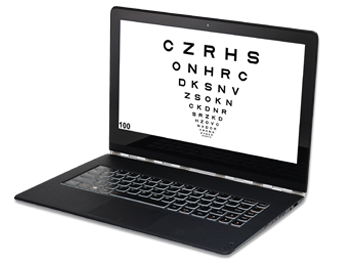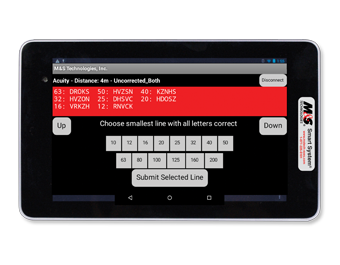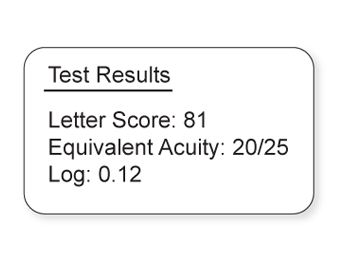GENERAL INFORMATION
- Utilized in multiple PMA studies in both IDE and IND studies
- Peer reviewed and submitted for publication by Illinois College of Optometry, ARVO Poster Exhibit 2017, pending manuscript
- Can be customized to accommodate non-standard calibration distances
- Data can be automatically uploaded to any EDC or reading center from anywhere in the world (requires internet connection)
- Tablet controlled for error free operation
- Lifetime Technical Support - 24 Hour Technical Support for International Investigator Sites
FEATURES
- Automated ETDRS quickly and accurately measures visual acuity while eliminating technician bias and erroneous results
- Choose Sloan letters (10) or British Standard Institution letters (12)
- Each presentation is randomized thereby eliminating the memorization effect and is consistent and repeatable
- System calibration set for 70cm for intermediate and 40cm for near testing and is configurable
- The system is precisely calibrated for both distance to subject and a pixels/inch so that optotypes precisely follow ANSI Z80.21-2020 and ISO 8596:2017 in regard to size, spacing between optotypes, and spacing between lines
- Background luminance is accurately calibrated to 85 cd/m2 for standardized ANSI and ISO testing or any other background luminance from 80 to 320 cd/m2 or as required for a study
- Near and Intermediate results indicate ETDRS numerical score, visual acuity level and log value
- Test results can be exported to any media file in any format for statistical analysis or automatically uploaded to any EDC or reading center
USE & OPERATION – HIGH-RESOLUTION TABLET
- The system is controlled by a high-resolution tablet via a standard Bluetooth connection utilizing our CustomLink® technology
- The testing mechanism interfaces seamlessly with CTS (Clinical Trial Suite) to allow the clinician to follow the protocol as determined by the sponsor
- A descending ETDRS logMAR chart is presented using either ten Sloan Letters or any other available letter set
- The subject responds with the smallest line where all five letters can be correctly identified and the technician simply enters the line number and presses “Submit”
- The chart then randomizes, setting the selected line to the top line and a pointer is shown at the next smaller line
- The subject is then asked to read this line and the number of correct letters is input; the pointer moves to the next line
- The test continues until the subject is no longer able to identify any correct letters within a line
- When the test is complete the results are reported in the standard ETDRS Letter Score, Visual Acuity equivalent and logMAR equivalent


